A line release in RFEM 6 can be defined using the menu "Insert" → "Special Objects" → "Line Releases" → "Dialog Box", as shown in Image 1. You can also find line releases under “Special Objects” in the navigator’s data.
The use of line releases will be shown in a practical example. The model of interest is a steel construction with a concrete slab placed with a certain eccentricity above it (shown in Image 1). First, the slab deformation when subjected to imposed load of 20 kN/m2 is demonstrated. The assigned load is shown in Image 2 and the deformation associated with this load case are then shown in Image 3.
Let us now define line releases for the concrete slab. As already mentioned, you can define a line release using the menu 'Insert' → "Special Objects" → "Line Releases" → "Dialog Box" or via the “Special Objects” in the navigator’s data (Image 1). In both cases, the dialog box "New Line Release" is available to you as shown in Image 4. Select the lines of interest in the upper right corner and the surface associated to the slab (that is, Surface No.1) in the “Released Objects” section of this dialog box.
By doing this, surface No.1 will be decoupled along the selected lines. RFEM generates a copy of the line at the same location where the released deformations are allowed. In the “Release Generation” section, you can select whether to place the release (hinge) on the “Original line” or the “Released line”. The setting specifies with which part of the model the hinge is deforming, thus having an effect on the results.
It is necessary to specify the properties that control the transfer of the internal forces and moments between the original line and its copy. You can do this by defining the line release type in the “New Release Type” dialog box shown in Image 5. The dialog box is accessible via the “Create New Release Type” icon indicated in Image 4, or via the “Types for Line Releases” entry in the “Types for Special Objects” of the navigator’s data.
To create the line release type, you must define the appropriate release type conditions. In the “New Line Release Type” dialog box (Image 5), the release type conditions are divided into three “Translational” degrees of freedom which describe the displacements in the direction of the local axes and one “Rotational” release that controls the rotations about the longitudinal line axis.
By selecting the check box for the respective axis, you indicate that an object's displacement in or rotation about the corresponding direction is possible. Then, you can adjust the constant of the translational or rotational spring as well as specify the suitable entry from the list of nonlinearities in the “Nonlinearity” column. Thus, you can specifically control the release for each deformation component.
Lastly, you need to specify which “Local Axis System” is used as a reference. You can choose between the following options: “Original line”, “Z-axis perpendicular to surface” (you are then asked to select the surface whose local z-axis is governing for the alignment of the axes) and “Help node” (you are then asked to enter the number of the node or define it graphically and select the plane (x-y or x-z) to define the axes). The option to rotate the line release by an angle β is also at your disposal in this section.
Image 4 and 5 show the settings for the line release defined in this example. By doing this, the model is now decoupled along the selected lines. Image 6 clearly displays how the line release affects the deformation of the slab.
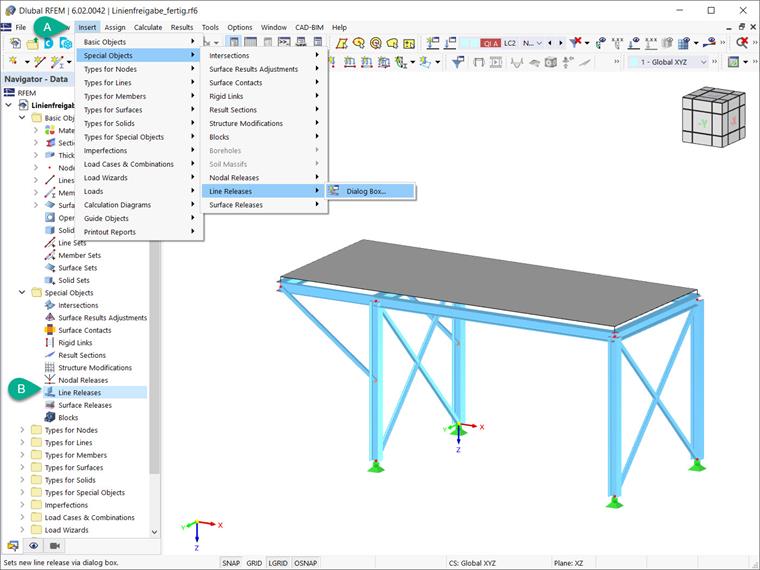
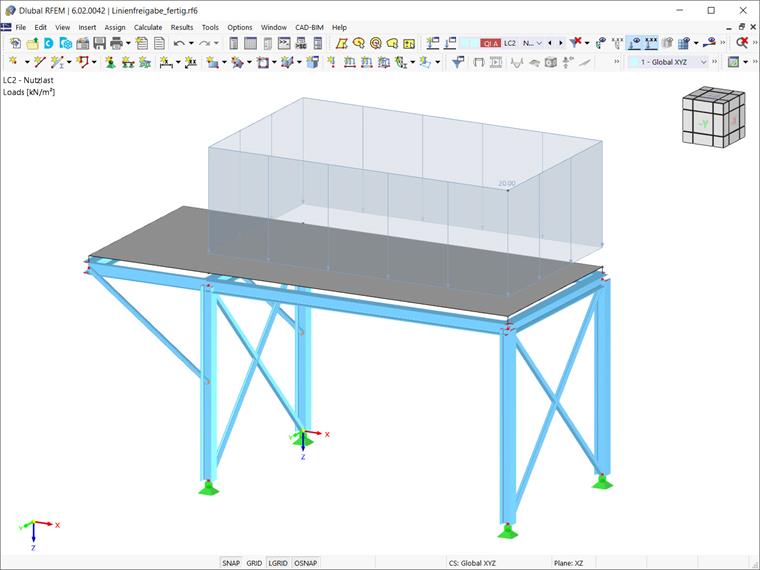
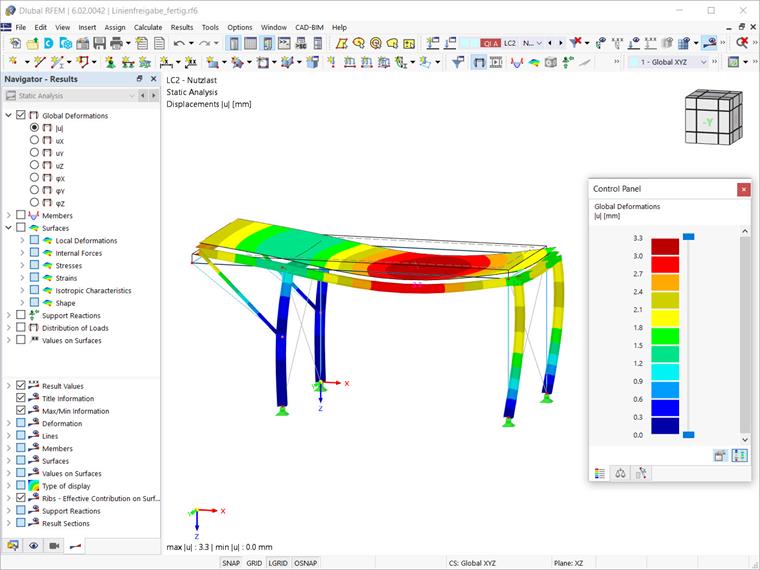
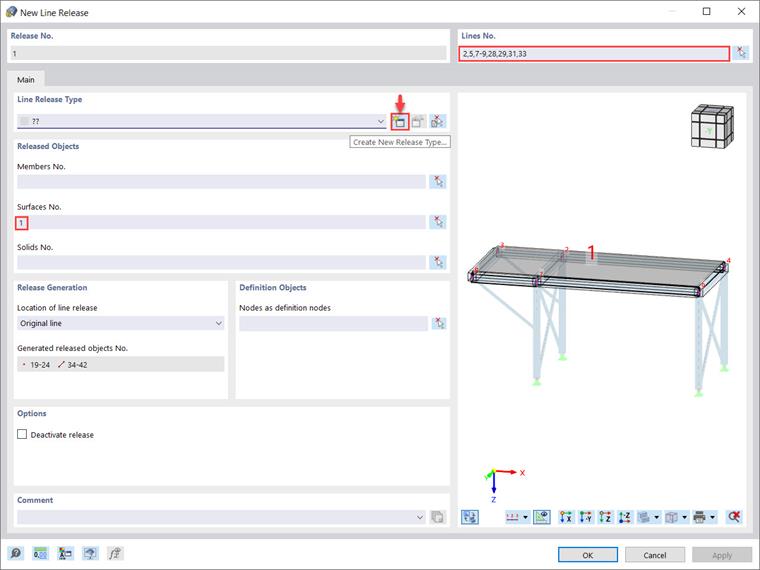
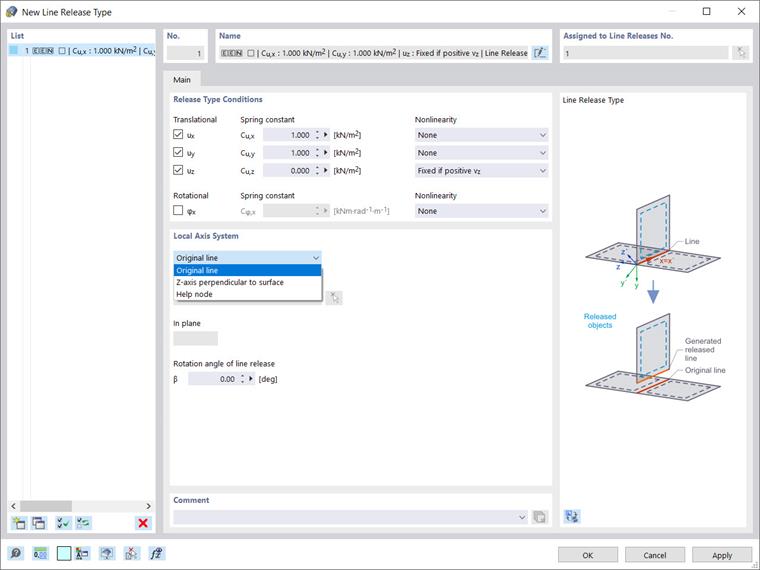
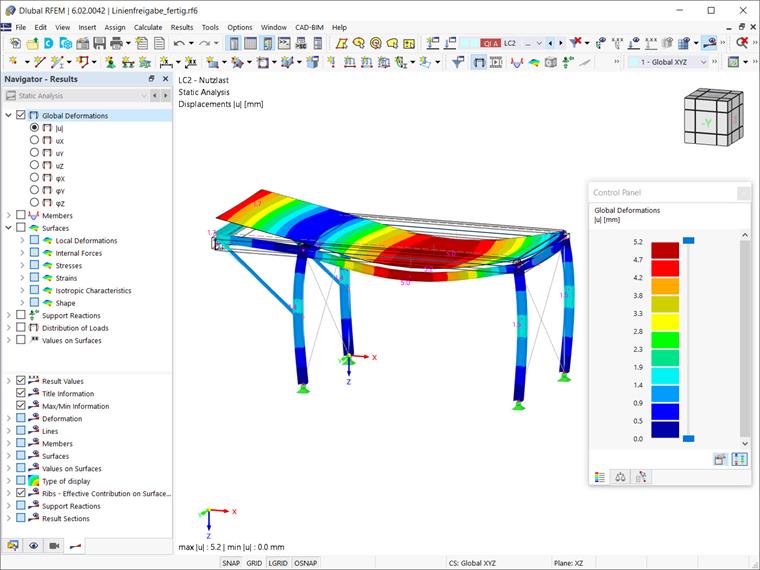
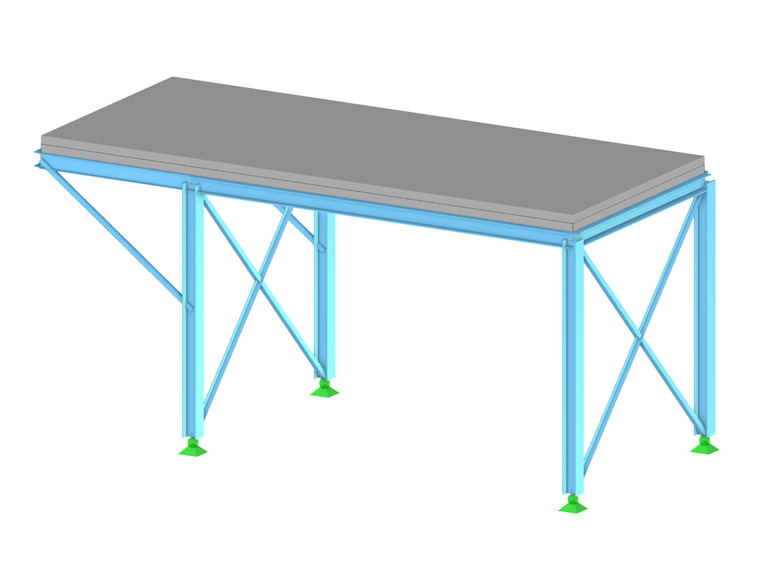



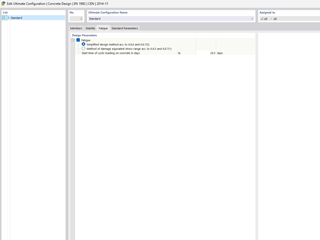
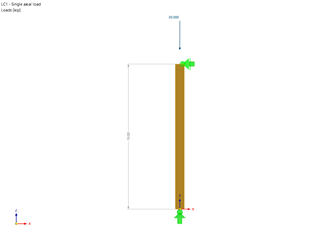






























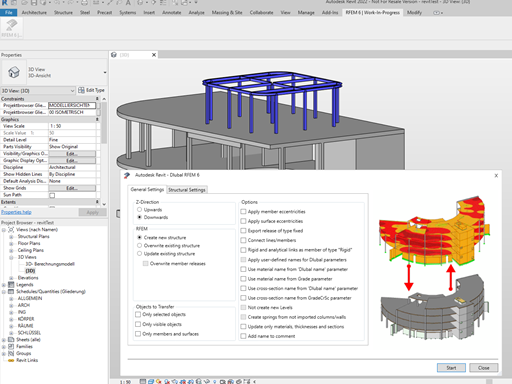
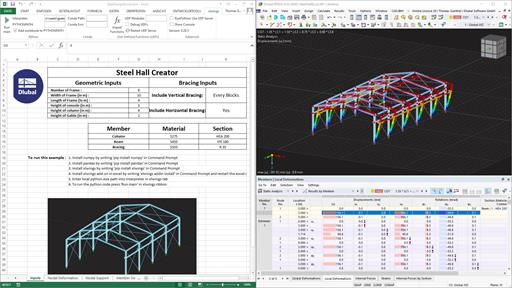
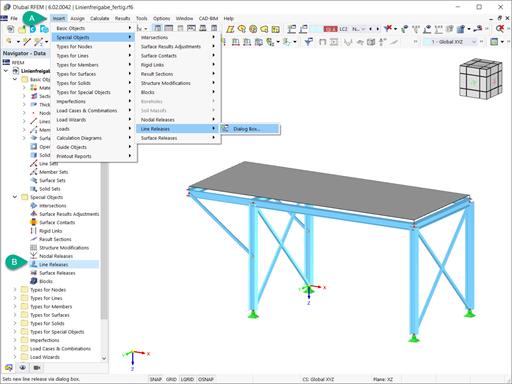





















.png?mw=600&hash=49b6a289915d28aa461360f7308b092631b1446e)











